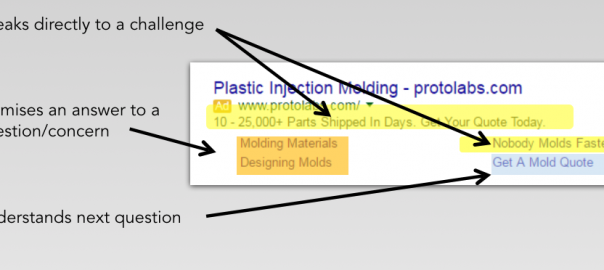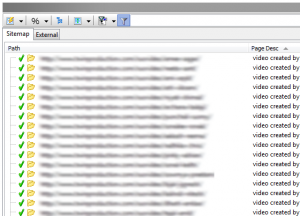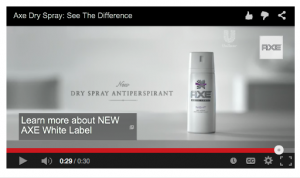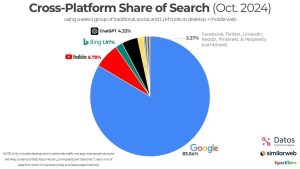
I’ve been around B2B Lead Gen Pay Per Click (PPC) campaigns long enough to know that they can go one of three ways:
- The program can be a cost effective way to successfully drive leads at a return rate that makes complete financial sense for an organization.
- It successfully drives leads, but mostly not the kind you’re looking for. For those you do get, it isn’t nearly enough to justify the financial commitment and the time it takes from your team.
- You get little to no leads out of the engagement and the whole thing costs you way too much time and money.
Last week the StoryTeller team was kind enough to invite me to share a few key insights on PPC marketing in a brief webinar. If you missed it, you can watch it on-demand here and if you follow the advice you’ll be more likely to have the experience outlined in path #1 (noted above). We only spent 30 minutes talking through some high level examples and concepts, but the topic is complex enough that you can spend a whole day talking about each of the core components required to make it successful.
Below is an illustration that shows the key components necessary to make up a well-orchestrated PPC campaign and achieve the type of results that really make it worthwhile. If you get ANY one of these pieces wrong, your program won’t be effective for you.
Let’s do a quick rundown on each of these pieces (Note, they’re not listed in order of importance because that would suggest that you can skip some and, you cannot.) The list, in no particular order:
1. Start with Personas
This one should be fairly obvious, but it’s often overlooked when an organization starts a PPC campaign. Simply put, you need to know who you’re trying to appeal to. Whether your campaign is managed by an agency or an in-house resource, without clear definitions and direction about your intended audience(s), your campaign will falter.

2. Keyword Selection
This one, two, should be obvious, but many businesses don’t think about what keywords REALLY are their core. Keywords offer clues into how customers think, questions they have, comparisons they make, issues they’re dealing with, etc. Think about keywords as a window into the mindset of your customer rather than “what it costs” or “whether or not your competitor is bidding on it.”

3. Refining Your Ad Copy
Your ad copy must attract the MEANINGFUL click. Note that this doesn’t say that it “must attract the click”. If your ad doesn’t get a click from a relevant prospect and they just end up leaving your site 10 seconds after getting there, you’ve just paid good money for a worthless visit. Don’t try to be everything to everyone – just be useful and relevant to your audience target.

4. Pick a Meaningful Destination
Of course, this means a proper landing page. Unfortunately, this is often an afterthought for many brands. It shouldn’t be for this very reason: So….. you’ve got the click. Congratulations!!
Now what? Do those visitors (whom you just paid real money to get to your site) actually do anything once they land on your page? Do they convert into a lead? If not, do they at least progress further in your sales funnel as result of making that click on your paid ad? If you do nothing else, understand that the cardinal sin of pay per click campaign would be to invest in non-branded paid ads (in other words, paid search ads that don’t contain some variation of your brand name) and drive visitors to the home page of your website.
5. Set Clear Goals and Objectives
No project should initiate without them. It’s like getting in your car and just taking a drive without a destination in mind. It can be fun and you’ll see some interesting things along the way, but there’s no real goal to obtain (other than to just take a drive).
6. Message Match
Simply put, your prospect is on a journey towards making some sort of decision. You got that click based on the promise you made in your ad messaging. That promise may have been to answer a question, solve a problem, provide an option, tell a story, etc. Your messaging from that point on must be consistent. That means obvious elements like the ad copy and landing page, of course, but also additional steps along the way like downloads, lead qualification calls, sales team correspondence, email follow ups, etc. Inconsistencies will confuse your prospect and it doesn’t take a genius to know that a confused prospect is one less likely to buy.
7. Bid Strategy
You need a bid strategy to succeed in an auction and fundamentally, that’s what Paid Search is. There are multiple variables that factor into what you’ll pay to be listed in a certain position (for example a “quality score” metric from Google that takes certain factors into account to determine how relevant and optimized your campaign is). There’s enough material on these variables to write chapters of material so that’s another post for another time. The point is – you need to have a strategy. Look beyond the obvious (what you’re willing to pay and what position you want to be in) and look to things like time of day, day of week, weather related factors, local market conditions, etc. Take your bid strategy to that level and you’ll see some dividends.
8. Measurement and Analysis
All of these previous tactics are nothing without proper measurement and analysis in place. The concept is very simple and summed up by a quote from 19th century physicist William Thompson: “If you can’t measure it, you can’t improve it.” Of course, he was certainly not referring to the world of digital marketing, but the principle most certainly applies here.
There you have it from a very high level – the ingredients of a well-orchestrated pay per click campaign. Of course, there are additional details, nuances, and considerations based on your unique situation, but fundamentally these are the pieces you need to have in place.
Digital & Social Articles on Business 2 Community
(95)
Report Post








